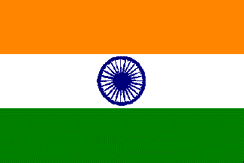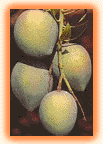

NATIONAL SYMBOLS OF INDIA

The Indian flag was designed as a symbol of freedom. The late Prime Minister Pandit Jawaharlal
Nehru called it "a flag not only of freedom for ourselves, but a symbol of freedom to all people."
The National Flag is a horizontal tricolour in equal proportion of saffron (subdued orange) on the top, white in the middle and dark green at the bottom. The ratio of length to height shall be 3:2. In the centre of the white band, there is a wheel in navy blue to indicate the Dharma Chakra, its design is that of the wheel of law which appears on the abacus of the Sarnath Lion Capital of Ashoka. Its diameter approximates the width of the white band and it has 24 spokes. The saffron stands for courage, sacrifice and the spirit of renunciation; the white, for purity and truth; the green for faith and fertility.
On the afternoon of August 15, 1947, during the first public flag salutation ceremony; as Tiranga was unfurled against a clear warm sky. The design of the national flag was adopted by the Constituent Assembly of India on 22th July 1947. The use and display of the flag are regulated by the Indian Flag Code.
|
2002 - The Amendment to the Flag code in India. The 53rd Republic Day on January 26, 2002, was a very special day for us Indians. Fifty-four years after the tiranga (our Indian flag as it is popularly known) was adopted by the Constituent Assembly as the national flag, the citizens were free to hoist the Indian flag thanks to a public interest petition filed by Navin Jindal, a young industrialist from Madhya Pradesh, India .Click here to know more about the FLAG CODE OF INDIA |

Government of India Adopted this emblem, from the Sarnath Lion Capital of Asoka, on 26th of January 1950 as the national emblem. The National Emblem of India is a replica of the Lion of Sarnath, near Varanasi in Uttar Pradesh. The Lion Capital was erected in the third century BC by Emperor Ashoka to mark the spot where Buddha first proclaimed his gospel of peace and emancipation to the four quarters of the universe.The National emblem is thus symbolic of contemporary India's reaffirmation of its ancient commitment to world peace and goodwill.
The four lions (one hidden from view) - symbolising power, courage and confidence - rest on a circular abacus. The abacus is girded by four smaller animals - guardians of the four directions: the lion of the north, the elephant of the east, the horse of the south and the bull of the west.The abacus rests on a lotus in full bloom, exemplifying the fountainhead of life and creative inspiration. The motto 'Satyameva Jayate' inscribed below the emblem in Devanagari script means 'truth alone triumphs'.

The Tiger(Panthera tigris) is a symbol of grace, strength, agility and enormous power. The species found in India, known as the Royal Bengal Tiger, has a bright reddish tan, beautifully marked with dark, almost black, transverse stripes. The Royal Bengal Tiger is found throughout India.
NATIONAL BIRD
The Peacock, is strictly the male of Peafowl (Pava Cristatus) species of birds. It is fully protected under the Indian Wildlife Protection Act, 1972 (Peahen, the famale of the species is also protected), however, Peacocks have always been repected by the people on religious and sentimental grounds. Peacocks are found accross the Indian sub-continent.
NATIONAL FLOWER
The Lotus or waterlily is an aquatic plant with broad leaves and bright fragrant flowers that grow only in shallow waters. The leaves and flowers float. The big attractive flowers have many petals overlapping in a symmetrical pattern. The sacred Lotus is legendary and much folklore and religious mythology is woven around it.
NATIONAL FRUIT
Mango (species Mangifera indica) is a fleshy fruit that is rich in vitamins A, C and D. It is cultivated throughout India. Mangoes are vividly coloured with shades of red, yellow and green. The mango is inextricably connected with the folklore and religious ceremonies India. There are over 100 varieties of Mangoes, each variety having a distinct size, shape and colour.
NATIONAL TREE
Banyan, whose branches root themselves like new trees over a large area. The roots then give rise to more trunks and branches. Because of this characteristic and its longevity, this tree is considered immortal and is an integral part of the myths and legends of India. Even today, the banyan tree is the focal point village life and the village council meets under the shade of this tree.
NATIONAL GAME
Hockey is the National Game of India. Unmatched excellence and incomparable virtuosity brought India a string of Olympic gold medals. The Golden Era of hockey in India was the period from 1928 - 1956 when India won 6 consecutive gold medals in the Olympics. During the Golden Era, India played 24 Olympic matches, won all 24, scored 178 goals (at an average of 7.43 goals per match) and conceded only 7 goals. The two other gold medals for India came in the 1964 Tokyo Olympics and the 1980 Moscow Olympics.

